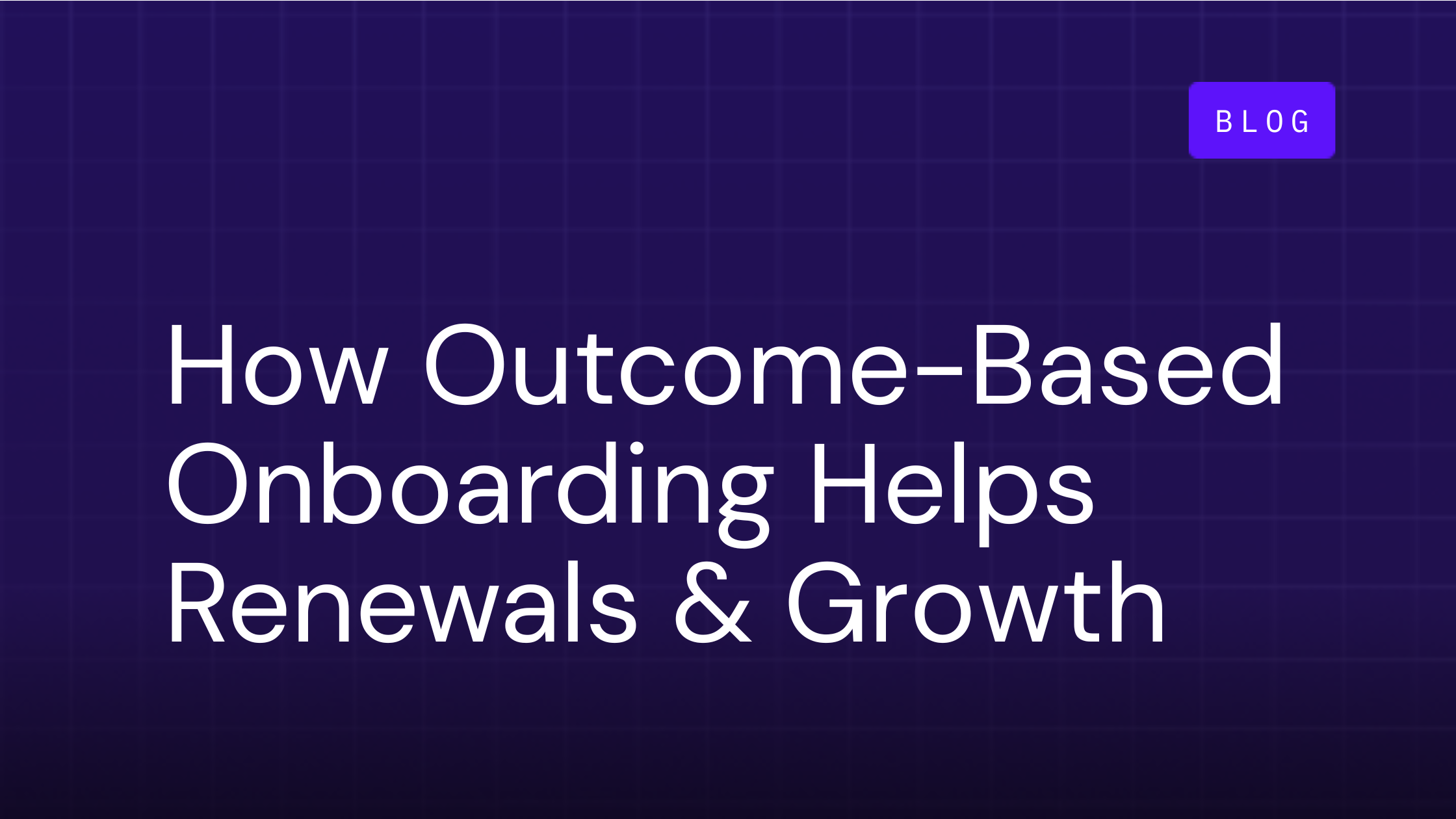Onboarding is a critical time, but time always runs out
Customer Onboarding. The part of the customer lifecycle that starts with a well-intended handoff and enthusiastic kickoff call but too often gets cut short because time runs out.
- Time runs out for the onboarding team because they have to make room in their schedule for the next new customer, so they pass a not-so-ready customer off to the Success Manager.
- Time runs out because the customer feels like the onboarding process is just more tasks for them to do with no clear outcomes, so they stop showing up.
- Time runs out because too many people are involved, but nobody really is fully invested, and eventually the process fizzles out.
- In all of these scenarios, time runs out because time is precious, and in business when the ROI on time isn’t there, we cut our losses on whatever is wasting our time.
Donna Weber, in the opening chapter of her book, Onboarding Matters, aptly points out “...the main reason customers leave your company in the first year is because they never got value from your product in the first place…” Onboarding failure, or failure to launch as it’s often called, is arguably the ultimate root cause of customer failure. The Success Manager might carry the weight of the renewal contract, but it’s the onboarding team that sets them up for success or failure.
If Onboarding is so critical, why does it so often get shortchanged on time?
A fate sealed from the get go
Onboarding is too often an afterthought for many organizations. Caught between the ROI-driven Marketing and Sales machine at one end, and the revenue retention Success Management function at the other end, Onboarding’s most prevalent metric is cost, and therefore the goal becomes to reduce it. Onboarding is the most crucial time in the customer lifecycle. However, without proper metrics and visibility, it’s easy to under-appreciate and under-invest in the platforms and processes teams need to make sure their customers get off to a fast start and are fully set up for success.
Often, the experience goes something like this: hand off the customer from sales to someone who knows the product really well. The Onboarding team is staffed with experts. They might not have a lot of processes (maybe a generic project management tool or a couple of fields in a CRM), but they will figure it out. They always do, as this team excels at heroics. Even heroes need metrics though, so we measure them on Time to Value. TTV sounds like a great measure, but it needs to be handled with care. If you are the one setting the target, you might be more focused on the ‘V’, the Value, but if you are the one doing the work, you are likely being driven more around the ‘T’, the time it takes you to complete the work and move on to the next customer.
Armed with an enthusiastic new customer and a ticking clock, the onboarder proceeds to launch the project and hold a bunch of meetings with the customer and several of their team members. There will be multiple rounds of email exchanges, back-n-forth scheduling syncs, information and document sharing, systems integration audits and connections, unblocking unforeseen product nuances, and discussing details that weren’t fully covered during the sales process. The product gets implemented – at least enough to get started. The customer receives some training, and what they haven’t learned yet, they can ask the Support Team to help them with.
In a best-case scenario, the customer emerges from this process set up, fully engaged, and using the product to realize the value for which they purchased it.
More likely, the hiccups in the process led to partial results. The customer is technically set up, able to log in, and trained enough to start using the product. Yet, upon the buzzer, like a hot potato, they’ll be passed through to the next phase in their lifecycle and on to the next person.
By managing tasks instead of outcomes and under-investing in onboarding specific orchestration and automation tooling, we seal the fate of our onboarding team and the customers they work so hard to serve.
Buying time
In some situations, companies 100% recognize the downhill revenue effect and renewal risk associated with this all-too-common onboarding approach. This is especially true when the product or service price point is high. As a solution, they may invest dollars in post-sales consultative heroics to ensure, by whatever means, particular customers get up and running.
Throwing money at a problem can sometimes work, but it’s never the ideal solution. Without a better option, however, it’s all we can do when our customers and the associated revenue are too big to risk failure.
On the other end of the customer size spectrum, companies may offer self-service or tech-first models, hoping customers have sufficient motivation to onboard themself, perhaps with an occasional automated reminder email nudging them along. We all really want this approach to work, and sometimes it does, but automated reminders to watch yet another video rarely drive the sustained engagement we seek with our customers.
Time to shift gears
Imagine now a customer onboarding model that, like a well composed symphony, orchestrates all requirements and document gathering, communications exchanges, and information sharing. In unison, it systematically manages every task via timely/dynamic workflow triggers, alerts, and easy self-service response options.
In this scenario, both customer teams and customers are freed from administrative bottlenecks that candidly neither get excited about. Time is now spared for teams to double down on getting customers using the product or service and on their way to seeing the value that was promised when they signed the contract.
Instead of running out the clock before value is seen, it’s instantly experienced, consistently from the start. On day one. Rather than kicking off the relationship with process speed bumps that balloon into time-sucking bottlenecks, customers experience positive interactions with your business, see that you value their time, and trust that you’ll deliver.
Teams now have a platform built just for them, designed to handle the necessary but rather dull aspects of the job, alongside a bespoke, repeatable—yet configurable and personalized—way to scale the value-added results, for each and every customer.
It’s time to elevate onboarding to a prominent seat at the table as one of the most important activities in determining future revenue retention and expansion.
Let’s rethink customer onboarding for what it is: the starting point in the most important relationship we have in business. The relationship between our company and our new customers.



